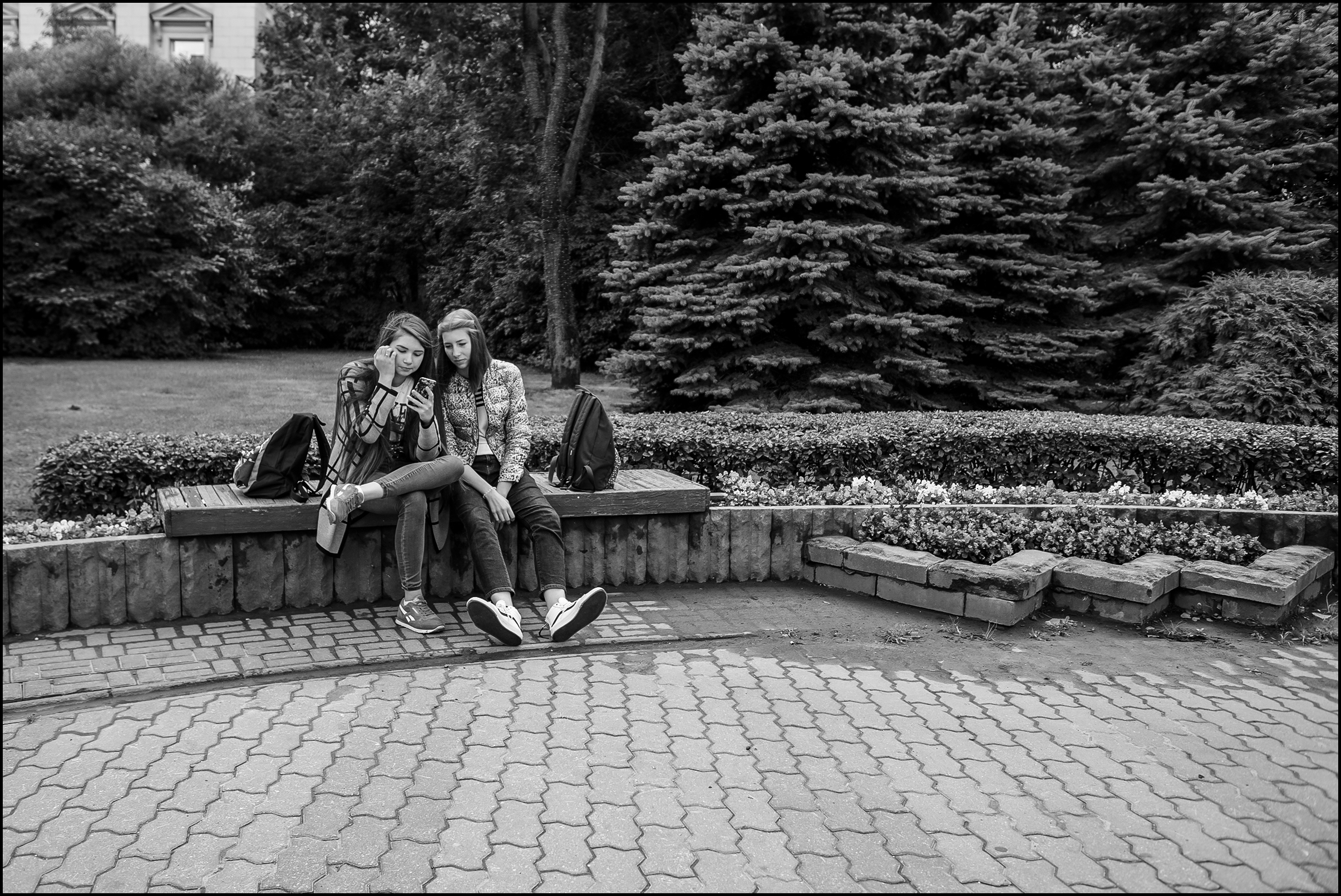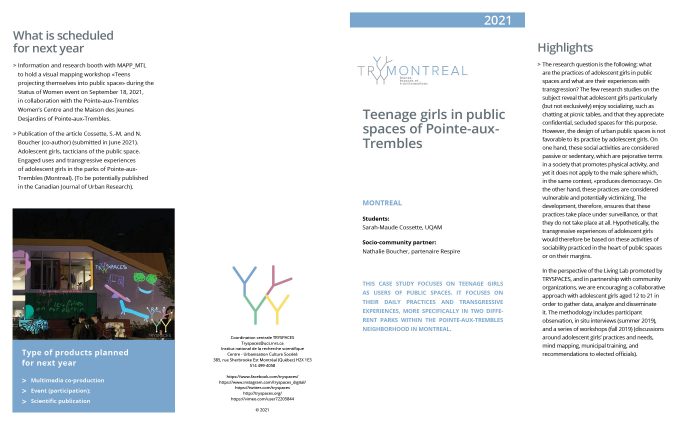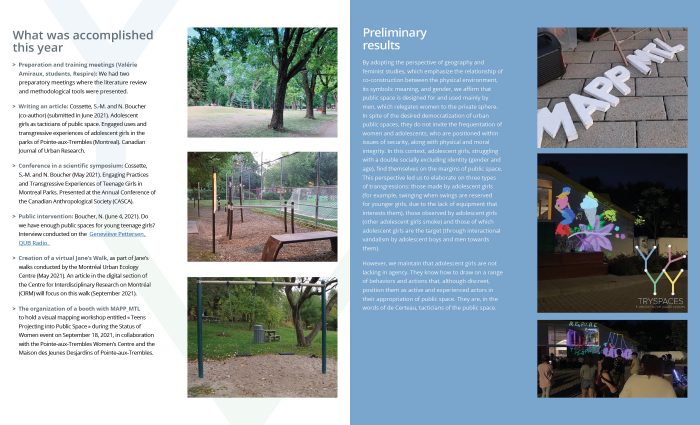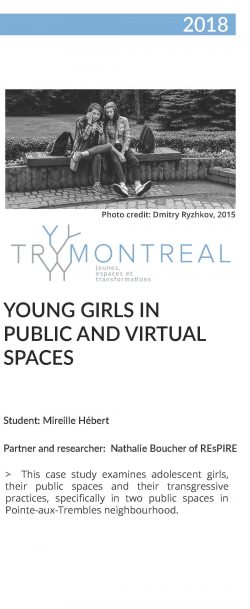The Transgressive Practices of Adolescent Girls
montreal

This case study focuses specificaly on adolescent girls, the public spaces that they use and their transgressive practices in Montreal
What are adolescent girls’ practices in public spaces, and how do they transgress rules, norms and expectations?
By adopting the posture of feminist studies that emphasize the co-construction of the physical environment, its symbolic meaning and gender, we affirm that, in our North American context, public space is thought for and used by men. This omnipresence in the management and use of public spaces relegates women, voluntarily or not, to the private sphere. And even though urban public spaces have been increasingly open and democratic for almost a century, public spaces remain stigmatized for women of all ages, who are being positioned in issues and discourses pertaining to security and physical and moral integrity.
In this context, adolescent girls, struggling with a socially-excluding double identity (relative to their age and gender), find themselves on the margins of public space. This TRYSPACES Montreal case study thus seeks to answer the following question: What are adolescent girls’ practices in public spaces, and how do they transgress rules, norms and expectations?
What we know from existing studies on the topic
The few studies on the subject reveal that adolescent girls particularly (but not exclusively) enjoy social activities, such as conversations in welcoming places. On the one hand, these social activities are socially considered passive or sedentary, pejorative terms in societies that promote physical activity and yet do not apply to the male sphere which, in the same context, is seen to (re)produce democracy”. On the other hand, these practices are seen as vulnerable and potentially victimizing for adolescent girls, resulting in the emergence of a pool of resources to ensure that these practices take place under surveillance or not at all. Hypothetically, the transgressive practices of adolescent girls would therefore be based on these social activities practiced in or outside public spaces.
What we aim to do
From the Living Lab perspective promoted by TRYSPACES, and in partnership with high schools and community organizations, we work through a collaborative approach with adolescent girls aged 14 to 18 to collect, analyze and disseminate data.
First, we will conduct group interviews with five groups of eight adolescent girls to understand, in their own words, the spaces that are frequented and the regulated and transgressive practices. We will thus establish, according to their needs, the terms of the research, its objectives and its conduct. During these meetings, we wish to obtain localized and qualified data on frequented places and regulated and transgressive practices. Such data could take the form, for example, of cognitive maps of urban experiences. These maps consist of drawings, more or less detailed, of areas frequented between home and school, places associated with strong emotions regarding transgression or regulation. This exercise has two objectives: to establish a common basis for discussion on transgression and public space, and to allow us to develop an observation plan, which will be submitted to teenage girls for approval.
In a second phase, we will observe public spaces chosen by adolescent girls in order to shed light on the contexts that determine the staging of transgressive practices. A second meeting will be organized with the participants to discuss the results obtained during the observation, and to allow them to share their new vision of the transgression and their recent experiences, if necessary. Further data collection will be discussed and evaluated by the adolescent girls. Finally, a final meeting will be organized to discuss how to share the results. We anticipate that this case study will reveal that many transgressive practices of adolescent girls in the public space are commonplace, but negatively perceived by society, and that for this reason, they are opportunities to learn gender norms in the urban landscape.
Photograph: Dmitry Ryzhkov, 4 septembre 2015 (Flickr) https://flic.kr/p/JZyBuK


Click here for 2021 A4 format printable version and 8.5 x 11 format printable version.
Click here for 2020 A4 format printable version and 8.5 x 11 format printable version.
Click here for 2019 A4 format printable version and 8.5 x 11 format printable version.
Click to consult the case study summary sheet for the year 2018 and the 2018 printable version.








